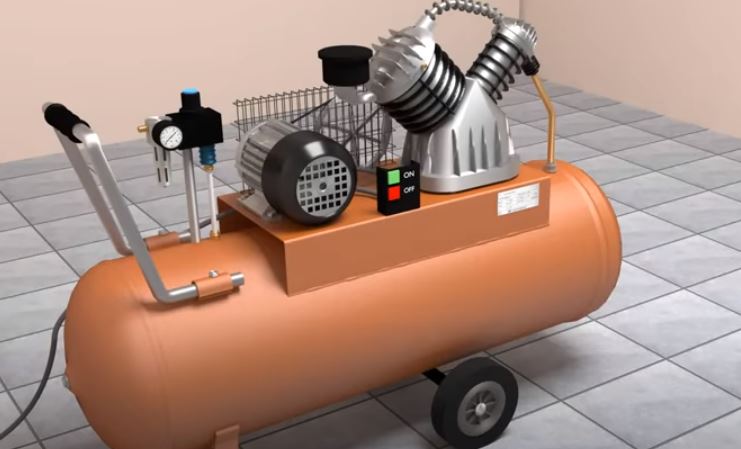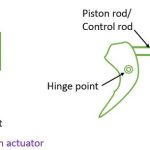Air compressors play a crucial role in various industries and applications by converting power into potential energy stored in pressurized air. These versatile machines find applications in manufacturing, construction, automotive, healthcare, and even in household tasks.
In this article, we will delve into the basics of air compressors and explore the different types available.
How Do Air Compressors Work?
At its core, an air compressor is a mechanical device that increases the pressure of air by reducing its volume. The basic working principle involves drawing in atmospheric air and compressing it using various mechanisms. The compressed air can then be stored in a tank and used for a wide range of applications of pneumatic system and others.
Types of Air Compressors
Reciprocating (Piston) Compressors
- Description: These compressors use a piston within a cylinder to compress air. As the piston descends, it pulls air into the cylinder. When the piston moves upward, the air is compressed and forced into a storage tank.
- Applications: Reciprocating compressors are suitable for applications requiring high pressure and low flow rates, such as in small workshops and tools.
Rotary Screw Compressors
- Description: Rotary screw compressors use two helical screws to compress air. As the screws rotate, air is drawn in, compressed, and discharged into a storage tank.
- Applications: These compressors are well-suited for continuous operation and are commonly used in industrial settings for applications like manufacturing and assembly lines.
Centrifugal Compressors
- Description: Centrifugal compressors utilize a high-speed impeller to accelerate air and convert kinetic energy into potential energy. The compressed air is then directed into a diffuser, slowing it down and increasing its pressure.
- Applications: Centrifugal compressors are ideal for large-scale applications, such as in power plants and industries requiring high-volume, high-pressure air.
Scroll Compressors
- Description: Scroll compressors use two interleaving spiral-shaped scrolls to compress air. One scroll remains stationary while the other orbits, creating a series of gas pockets that progressively reduce in size, compressing the air.
- Applications: Scroll compressors are commonly found in HVAC systems, refrigeration, and other applications requiring a steady and reliable air supply.
Factors to Consider When Choosing an Air Compressor
Choosing the right air compressor for a specific application involves considering several factors to ensure optimal performance, efficiency, and longevity. Here’s an elaboration on the key factors to consider when selecting an air compressor:
Air Quality Requirements
- Oil-Free vs. Lubricated: Determine whether the application requires oil-free air. Industries like pharmaceuticals, food processing, and electronics manufacturing often demand oil-free compressors to avoid contamination. Lubricated compressors, on the other hand, are suitable for general industrial applications.
- Filtration Systems: Assess the air quality requirements and consider additional filtration systems if necessary. High-quality filters can remove contaminants, moisture, and oil from the compressed air.
Pressure and Flow Requirements
- Pressure: Identify the required operating pressure for your tools or equipment. Different applications have varying pressure needs, and choosing a compressor that meets or exceeds these requirements is crucial for efficient operation.
- Flow Rate (CFM): Determine the required cubic feet per minute (CFM) of compressed air for your application. Matching the compressor’s output to the demand ensures that it can deliver the necessary air volume.
Duty Cycle
- Intermittent vs. Continuous Duty: Consider the duty cycle, which refers to the percentage of time the compressor can run within a given period. Reciprocating compressors are often better suited for intermittent use, while rotary compressors are designed for continuous duty.
Type of Compressor
- Reciprocating (Piston): Ideal for applications with intermittent air demand, such as small workshops and tools. They are cost-effective and suitable for low to moderate pressure requirements.
- Rotary Screw: Suited for continuous operation in industrial settings. They provide a steady air supply and are energy-efficient, making them suitable for applications with higher air demand.
- Centrifugal: Designed for large-scale operations requiring high-volume, high-pressure air. They are energy-efficient but are generally more expensive and complex.
- Scroll: Commonly used in applications requiring a reliable and quiet air supply, such as HVAC systems. They are oil-free and have a compact design.
Space and Portability
- Footprint: Evaluate the available space for the compressor installation. Some compressors, like rotary screw models, may have a larger footprint, while others, like scroll compressors, are more compact.
- Portability: If mobility is essential, consider portable compressors with wheels or a smaller design. Portable compressors are suitable for construction sites or locations where the compressor needs to be moved frequently.
Power Source
- Electric vs. Gasoline/Diesel: Consider the available power source. Electric compressors are common in indoor settings with access to electricity, while gasoline or diesel-powered compressors are more suitable for outdoor and remote locations.
Maintenance Requirements
- Ease of Maintenance: Evaluate the maintenance requirements of the compressor. Some compressors, like rotary screw models, may have lower maintenance needs compared to reciprocating compressors. Consider factors such as oil changes, filter replacements, and overall ease of maintenance.
By carefully considering these factors, you can select an air compressor that aligns with the specific requirements of your application, ensuring optimal performance and longevity.
Conclusion
Air compressors are indispensable in various industries, providing a reliable source of compressed air for a wide range of applications. Understanding the different types of air compressors and their specific characteristics is crucial in choosing the right equipment for your needs. Whether it’s a small workshop, a manufacturing plant, or an HVAC system, the right air compressor can make a significant difference in efficiency and overall performance.



1 thought on “Mastering Air Compressors: Principles, Types, and Choosing Guide”
Comments are closed.